Protein is essential for the body. Animal protein is good for you, but sadly, the production and processing as well as transportation of animal protein has a very negative impact on the environment. You may be wondering what other sources of protein are there, which can be a good replacement. There are plant proteins which are as effective, but even when you purchase these, it’s better to buy local to reduce your ecological footprint. Check out these environmentally friendly protein sources we’ve found for you:
16 environmentally friendly protein sources
Quinoa
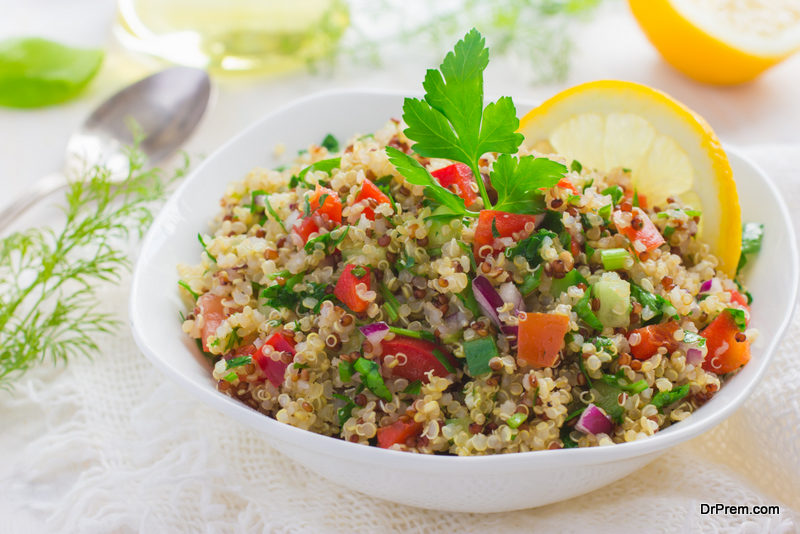 Quinoa is one of the environmentally friendly protein sources which is gluten-free, and is one of foods which have all the nine essentials amino acids. It is high in magnesium, fiber, vitamin B, potassium, iron, calcium, vitamin E, phosphorus and many other beneficial antioxidants.
Quinoa is one of the environmentally friendly protein sources which is gluten-free, and is one of foods which have all the nine essentials amino acids. It is high in magnesium, fiber, vitamin B, potassium, iron, calcium, vitamin E, phosphorus and many other beneficial antioxidants.
You can cook quinoa and have it in salads, or replace it in the recipes for rice such a mixed vegetables and rice, or ‘pulao’ to have a delicious and nutritious meal. Cooking tip: you would probably need 2 cups of water to cook one cup of quinoa. It has to be washed and cooked properly, or you might find the taste is a little bitter.
The bitterness is due to the coating on the seeds, called saponins, which creates foam when boiling. Remove the leftover saponins by washing the quinoa thoroughly. Put them in a sieve and let water run over them for some time, then cook it just as you would cook rice.
Hemp seeds
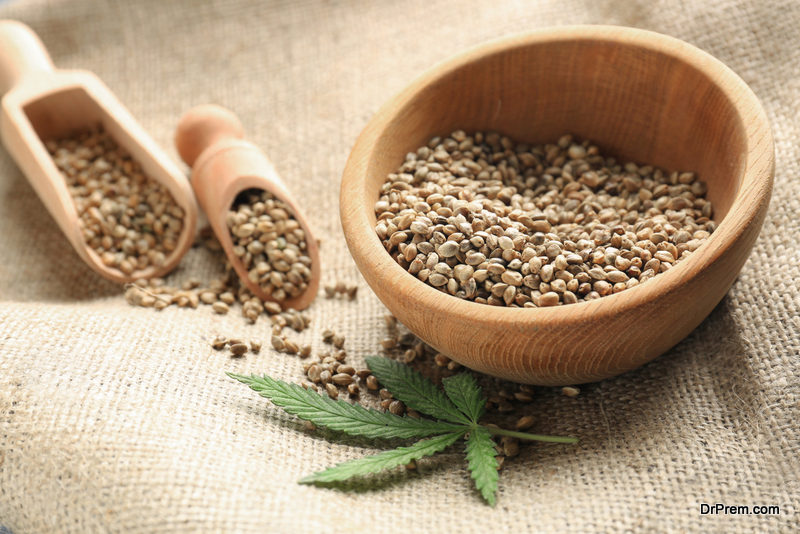 Hemp seeds contain approx 65% protein. They are easily absorbed by the body and digested, and are hypoallergenic as well. Organic hemp seeds naturally have as many advantages as environmentally friendly protein than those grown with the use of synthetic chemicals. Organic hemp seeds do not pollute the soil with pesticides and fertilizers.
Hemp seeds contain approx 65% protein. They are easily absorbed by the body and digested, and are hypoallergenic as well. Organic hemp seeds naturally have as many advantages as environmentally friendly protein than those grown with the use of synthetic chemicals. Organic hemp seeds do not pollute the soil with pesticides and fertilizers.
But how do you eat hemp seeds, as these are comparatively new on the health scene, unlike flax seeds or chia seeds about which there is much more information and awareness. Hemp hearts or shelled hemp seeds, is very simple to consume – all you have to do is sprinkle them over salads, cereal, smoothies and yogurt. Whole seeds act as bulking agents, adding fiber to your diet.
The crunchy seeds which have a mildly nutty flavor can be roasted and eaten too. These seeds, which contain 30% fat approx, are rich in the omega 6 and omega 3 essential fatty acids, thus making them highly desirable plant protein. Iron, zinc, sulfur, calcium, phosphorus, sodium, minerals and vitamin E are present in hemp seeds. Due to its heart healthy and other medicinal properties it has been used as medicine and food in China for more than 3,000 years. Like, Quinoa, hemp seeds are considered a complete protein which is one of the environmentally friendly protein sources, a rarity among plant based proteins.
Lentils/Pulses
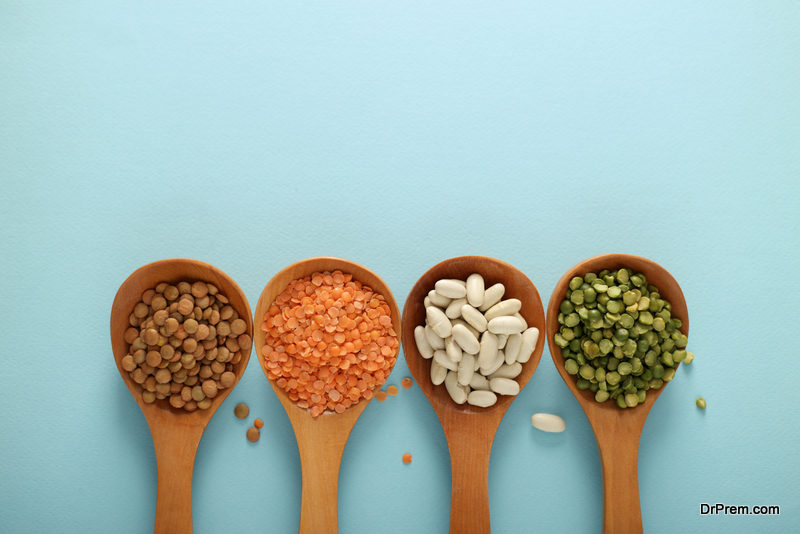 Lentils are of many varieties with different tastes. Red, yellow, green and black lentils are inexpensive and highly beneficial for the body. All lentils are good for the body. They have fiber, amino acids and healthy carbs. In fact, some nutritionists claim that they are the best protein for reducing environmental damage, as the carbon emissions produced in the post-production process is only .9 kg of carbon dioxide. Lentils release the complete protein when consumed with some kind of grain, such as rice, so to gain the best advantages of this environmentally friendly protein you should try to have them with a grain.
Lentils are of many varieties with different tastes. Red, yellow, green and black lentils are inexpensive and highly beneficial for the body. All lentils are good for the body. They have fiber, amino acids and healthy carbs. In fact, some nutritionists claim that they are the best protein for reducing environmental damage, as the carbon emissions produced in the post-production process is only .9 kg of carbon dioxide. Lentils release the complete protein when consumed with some kind of grain, such as rice, so to gain the best advantages of this environmentally friendly protein you should try to have them with a grain.
A meal of rice combined with lentils as gravy or ‘dal’, is the staple diet of countries such as India, where the meal provides complete nutrition for vegans and vegetarians. Raw or uncooked lentils can be stored easily for many months without refrigeration. They can be combined with stews and soups as well as side dishes to add variety to your daily consumption of them.
Peas
 One of the easiest ways to include environmentally friendly protein in the diet is by including peas. Peas are very easily accessible and grown locally in most parts of the world. You can buy them at your local farmers market, or grow them yourself. Shell peas and store them to enjoy them the whole year round.
One of the easiest ways to include environmentally friendly protein in the diet is by including peas. Peas are very easily accessible and grown locally in most parts of the world. You can buy them at your local farmers market, or grow them yourself. Shell peas and store them to enjoy them the whole year round.
Growing peas is beneficial for the environment as pea plants effectively fix nitrogen in the soil, which reduced the use or need for any synthetic fertilizer. A pea crop enriches the soil which readies it for the planting of the next batch of seeds. Peas require less water to grow too, so water use is reduced.
The high protein and fiber content of peas makes them a great choice as non-animal based protein. You can have them raw or cooked and used as part of many healthy recipes. However, check for non-GMO peas when you’re buying them.
Rice
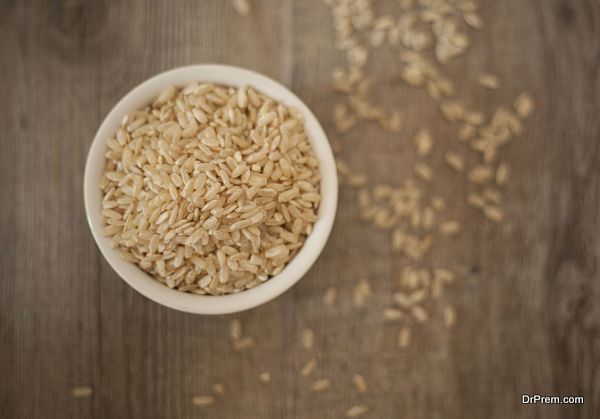 Rice is the staple food of many in the entire world. It is usually valued for the carbohydrate content but it also contains gluten free protein. Including rice as an environmentally friendly protein in the diet is easy and nutritious. Protein powders which are derived from brown rice can provide the necessary proteins that high-performing athletes and sportspersons require, if they want to forego meat in their diet.
Rice is the staple food of many in the entire world. It is usually valued for the carbohydrate content but it also contains gluten free protein. Including rice as an environmentally friendly protein in the diet is easy and nutritious. Protein powders which are derived from brown rice can provide the necessary proteins that high-performing athletes and sportspersons require, if they want to forego meat in their diet.
Nuts
 Nuts are also a great source of protein. You can eat them as snack, or as nut butter such as almond butter. Peanut butter is a very good protein source, but it does have a higher carbon impact, due to the step of processing. Raw peanuts are better than the peanut butter as they have lower carbon footprint.
Nuts are also a great source of protein. You can eat them as snack, or as nut butter such as almond butter. Peanut butter is a very good protein source, but it does have a higher carbon impact, due to the step of processing. Raw peanuts are better than the peanut butter as they have lower carbon footprint.
Soybeans
 Soybeans are widely grown in eastern Asia and are consumed in many different ways. Soy milk is a favorite of vegans, and after processing it you can have it as Tofu. Fermented soybean paste, tempeh, natto etc are made by fermentation process.
Soybeans are widely grown in eastern Asia and are consumed in many different ways. Soy milk is a favorite of vegans, and after processing it you can have it as Tofu. Fermented soybean paste, tempeh, natto etc are made by fermentation process.
Processing tofu has one third the carbon footprint of red meat such as beef. So it can be a good substitute for animal protein, but if the label does not mention whether it is non-GMO or organic, then there is a pretty good chance that the tofu was made from GM soybeans.
On the whole, soybeans are one of the healthy sources of environmentally friendly protein, as they need less water, land and energy to grow. Soybean plants are high yielding so in a less amount of land with less water, farmers can get a good crop. Besides, there are no greenhouse gases which are created in their production.
Beans
 Beans are regularly consumed by vegetarians and vegans. It is not just a source of vitamins but also a good environmentally friendly protein. Beans contain fiber and other nutrients such as iron and folate, which are extremely low in saturated fats. They are a good choice to help the planet as they definitely have lesser carbon footprint than raising animals on animal farms. Eat beans as often as you can, even dried beans which are better than processed beans.
Beans are regularly consumed by vegetarians and vegans. It is not just a source of vitamins but also a good environmentally friendly protein. Beans contain fiber and other nutrients such as iron and folate, which are extremely low in saturated fats. They are a good choice to help the planet as they definitely have lesser carbon footprint than raising animals on animal farms. Eat beans as often as you can, even dried beans which are better than processed beans.
Spirulina
 This is the superfood which has more than half complete proteins in the natural state, which is higher than any unprocessed food. It’s easy for the body to break down as well. Spirulina is a kind of bluish green algae which grows in fresh as well as salt water. The Aztecs used to consume this superfood, and it came to the limelight again when scientists at NASA discovered that it could be grown in space to provide nutrition for astronauts.
This is the superfood which has more than half complete proteins in the natural state, which is higher than any unprocessed food. It’s easy for the body to break down as well. Spirulina is a kind of bluish green algae which grows in fresh as well as salt water. The Aztecs used to consume this superfood, and it came to the limelight again when scientists at NASA discovered that it could be grown in space to provide nutrition for astronauts.
The daily dose for spirulina is about 1-3 grams, but you can consume more than that on the advice of a physician. Though there have been very few studies on the effect of spirulina on diabetes, heart disease etc, there have been anecdotal instances to show the benefits of spirulina for health.
A word of caution however – people who suffer from PKU or Phenylketonuria (a metabolic disorder wherein the body is unable to metabolize phenyamine) should not use spirulina, as it might contain phenylamine.
Milk
 Milk has low carbon footprint, especially if you buy milk from local dairy farms. As compared to lentils, which is one of the foods which has the lowest ecological footprint, 4 ounces of milk has very little carbon footprint. Milk is hard to replace, even though it is an animal derivative. Many people worldwide are turning to almond and soya milk instead of milk from cows. If you want to help to cut down the carbon emissions due to cattle raising, then choose the milk from cows which are grass-fed and other organic feed. Avoid the milk from dairies which use growth hormones.
Milk has low carbon footprint, especially if you buy milk from local dairy farms. As compared to lentils, which is one of the foods which has the lowest ecological footprint, 4 ounces of milk has very little carbon footprint. Milk is hard to replace, even though it is an animal derivative. Many people worldwide are turning to almond and soya milk instead of milk from cows. If you want to help to cut down the carbon emissions due to cattle raising, then choose the milk from cows which are grass-fed and other organic feed. Avoid the milk from dairies which use growth hormones.
Eggs
 Eggs are undeniably one of the best sources of protein and other nutrients, but is it an environmentally friendly protein? Raising chickens uses up energy and water in poultry farms which contribute to the carbon footprint of eggs. But the amount is much less than other animal protein. Eggs have several nutritional benefits apart from providing a very rich source of protein. They contain zeaxanthin, lutein and vitamin D which are very good for the eyes and general health.
Eggs are undeniably one of the best sources of protein and other nutrients, but is it an environmentally friendly protein? Raising chickens uses up energy and water in poultry farms which contribute to the carbon footprint of eggs. But the amount is much less than other animal protein. Eggs have several nutritional benefits apart from providing a very rich source of protein. They contain zeaxanthin, lutein and vitamin D which are very good for the eyes and general health.
Eating eggs from chicken which have been fed organic feed and allowed to run around the farm is the best option.
Chicken
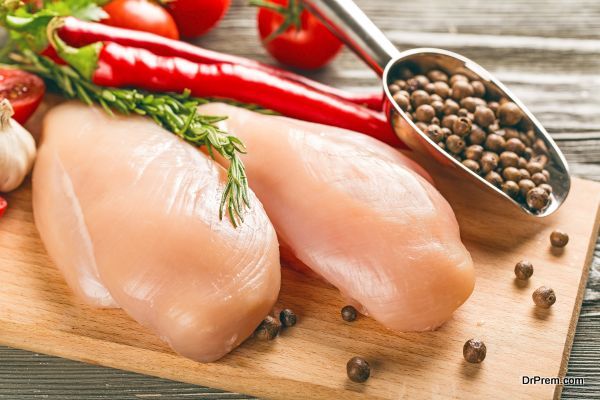 For those who cannot imagine leaving meat completely, the obvious choice is eating chicken, but you should know that its carbon footprint is greater than tuna and plant proteins. Still, eating chicken is better than eating pork, lamb or other red meat. You have a choice to lower the ecological footprint by consuming chicken which has been pastured or fed organic food.
For those who cannot imagine leaving meat completely, the obvious choice is eating chicken, but you should know that its carbon footprint is greater than tuna and plant proteins. Still, eating chicken is better than eating pork, lamb or other red meat. You have a choice to lower the ecological footprint by consuming chicken which has been pastured or fed organic food.
Chia seeds
 Chia seeds are a superfood as they contain all the necessary foods essential for the body. Healthy fats and proteins are abundant in Chia seeds, as well as fiber, iron, vitamins A and C, antioxidants and a good dose of calcium. 28 grams or 1 ounce of chia seeds have 5.6 grams protein. Add it to another food or soak it before consuming. You can even replace eggs in recipes which need eggs, if you are a vegan or vegetarian.
Chia seeds are a superfood as they contain all the necessary foods essential for the body. Healthy fats and proteins are abundant in Chia seeds, as well as fiber, iron, vitamins A and C, antioxidants and a good dose of calcium. 28 grams or 1 ounce of chia seeds have 5.6 grams protein. Add it to another food or soak it before consuming. You can even replace eggs in recipes which need eggs, if you are a vegan or vegetarian.
Cheese
 Cheese is one of the favorite foods of many people around the globe. There are many varieties of cheeses to choose from too and one of its properties is that it is a mood booster. But smaller quantities of cheese will not be harmful for the environment or you, for example one serving of cheese (1.5 ounces hard cheese) will be a delicious but environmentally friendly protein. Sharp flavored cheese will be better if you want to have only a little bit.
Cheese is one of the favorite foods of many people around the globe. There are many varieties of cheeses to choose from too and one of its properties is that it is a mood booster. But smaller quantities of cheese will not be harmful for the environment or you, for example one serving of cheese (1.5 ounces hard cheese) will be a delicious but environmentally friendly protein. Sharp flavored cheese will be better if you want to have only a little bit.
Food supplements
 Food supplements are not just for professional sportspersons or bodybuilders. You may not be getting the amount of protein you need from your daily diet due to various factors. So food supplements can be taken after consulting a physician, and better still, getting some tests done to see if you are lacking in protein and other nutrients. Dietary supplements are usually advised for elderly people to maintain good health. The production process of the supplements has to be considered, but it would still be less than that given off cows.
Food supplements are not just for professional sportspersons or bodybuilders. You may not be getting the amount of protein you need from your daily diet due to various factors. So food supplements can be taken after consulting a physician, and better still, getting some tests done to see if you are lacking in protein and other nutrients. Dietary supplements are usually advised for elderly people to maintain good health. The production process of the supplements has to be considered, but it would still be less than that given off cows.
Whey protein
 The liquid which remains after curdling milk is whey. It is the byproduct of cheese production, such as Swiss cheese or cheddar cheese and other hard cheeses which produce sweet whey. Bioavailability is a concern when we talk about the dietary requirements and fulfillment from different foods. Whey protein is undisputed as the food which has greatest bioavailability, even more than milk and eggs. All the three sources are environmentally friendly protein, as they do not directly emit any greenhouse gases.
The liquid which remains after curdling milk is whey. It is the byproduct of cheese production, such as Swiss cheese or cheddar cheese and other hard cheeses which produce sweet whey. Bioavailability is a concern when we talk about the dietary requirements and fulfillment from different foods. Whey protein is undisputed as the food which has greatest bioavailability, even more than milk and eggs. All the three sources are environmentally friendly protein, as they do not directly emit any greenhouse gases.
Why should you avoid animal meat as your protein source?
 Animal farming has devastating impact on the environment and wildlife. Meat production leads to emission of methane from the animals. To feed billions of people, livestock production has increased drastically , almost tripled and livestock occupies over 25% of land. Every day, the habitat marked for wild animals is shrinking as it has to make way for livestock production as well as the crops planted to feed them.
Animal farming has devastating impact on the environment and wildlife. Meat production leads to emission of methane from the animals. To feed billions of people, livestock production has increased drastically , almost tripled and livestock occupies over 25% of land. Every day, the habitat marked for wild animals is shrinking as it has to make way for livestock production as well as the crops planted to feed them.
With growing awareness, we can understand that if the demand for meat is reduced, then probably livestock production will decrease, thus reducing the carbon footprint and GHGs in the atmosphere. Global warming and climate change are a reality, and livestock is one of the main culprits. Americans consume the most meat per capita, and if they choose to eliminate meat from their diet just for one night a week, the reduction of emissions would be comparable to taking off 30-40 million cars off the roads for a year!
Our personal dietary changes do matter, so choosing to eat less meat or not at all, and eating environmentally friendly protein could be one of the ways you could be doing your bit for the environment.



